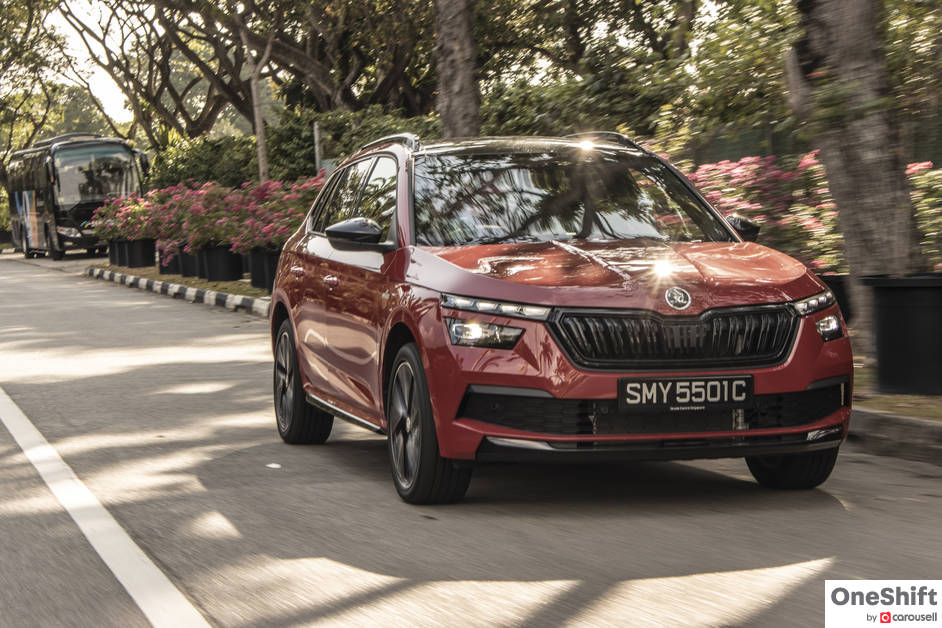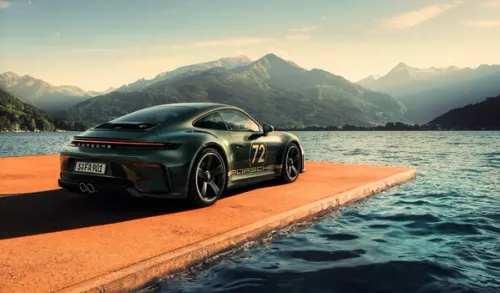A Beginner's Guide To Car Buying : What Type of Car Should You Buy?
Buying a brand new car without help or prior experience can seem like a pretty daunting task. In Singapore especially, the sheer number of new car options make the task even more difficult. You not only have to consider your budget, but also brand, image, practicality, and your preference for design. To offer more context to this topic, here are some possible scenarios that the average Singaporean might encounter.

Buying a brand new car without help or prior experience can seem like a pretty daunting task. In Singapore especially, the sheer number of new car options make the task even more difficult. You not only have to consider your budget, but also brand, image, practicality, and your preference for design. By staring at the entire scope of car offerings available to you all at once, it can feel overwhelming, making it difficult for you to zero in on any key areas of consideration. Here are some ways that you can go about thinking about your decision.

Whether it is your first car or your tenth car, the decision to purchase a new car will definitely be prompted by something in your life. It could be that you have gotten a promotion or come into some additional money, and would like to purchase something nice for yourself as a testament to your hard work. It could also be due to a growing family and a need for more space. Either way, the thought that prompts you to buy a new car should be your focus point, before considering the other factors. For obvious reasons, your budget will likely feature as a prominent consideration, but remember that your price is not the same as value, and should be viewed quite differently. To offer more context to this topic, here are some possible scenarios that the average Singaporean might encounter.

So you and your partner have worked hard and have enjoyed a good last couple of years. Both of you are looking to elevate your image and purchase a new car that will instill envy among your relatives and co-workers. As superficial as it may sound, I find this to be a perfectly legitimate reason for buying a new car. After all, car ownership isn’t just about mobility, and it is also plenty about the pride and joy of car ownership. That being said, this isn’t a one size fits all thing, and if it's the people around you that you are trying to impress, then you will need to understand your demographic. The truth is that different groups of people actually perceive brand and image differently. Depending on your social circle and demographic, a Vellfire could be perceived as more prestigious than an E-Class, a Civic Type R cooler than a Cupra Leon, and a Camry more luxurious (bigger) than a 3 Series or an A4. It all depends on who you are talking to.

Whenever possible, I try to have conversations about car ownership with most people I meet. I enjoy learning the various ways in which people perceive value, prestige, luxury, and class. There are those that feel that an entire collection of limited edition Casio G Shocks are more impressive than a single Rolex Submariner (something that I vehemently disagree with). What I have found quite common is that more traditional individuals often associate size with luxury and prestige. This is where I have found that there are many who would perceive a large Japanese sedan or SUV as superior to a compact continental car. The reference point often used by this group of people is whether or not a car has “a tail” or “no tail”. - Cracks me up every time. Essentially then, a Toyota Camry trumps a BMW 1 Series, which is why cars like the Mercedes-Benz CLA and Audi A3 sedan sell so well in Singapore. In this more traditional segment, full sized Mercedes-Benz and Lexus cars reign supreme as symbols of success. Conversely, among a younger, more modern circle, size doesn’t matter all that much, and instead, build quality, technology, and material use are more significant indicators of prestige and luxury. This is where cars like Mini, Citroen, Peugeot, Volvo, and entry level cars from Audi, BMW, and Mercedes are perceived more favourably. Among this demographic, purchasing a continental car that is smaller and more expensive than a larger, more affordable Japanese car exudes a higher level of discernment with regard to car ownership.

Most households in Singapore function on the basis of a single car as a result of high ownership costs and parking limitations. In my estate, residents are limited to 1 parking space per unit, with no option of acquiring a 2nd parking space even if one was willing to pay for it. So unless you live in a landed property or have access to multiple parking lots, it is likely that the single car you purchase will have to be practical enough to carry out all your day to day tasks. However, practicality is subjective, as it is quite specific to an individual’s needs. It is therefore important to identify exactly what you require from your car, based on your day to day needs.
When people think about practicality, boot size and passenger hauling capabilities are often the first things that people think of. Perhaps a little overlooked at times, are the little features that make the practicality accessible. For example, a Toyota Harrier does not come with any bag hooks in the boot. While this may seem trivial, it's bound to get on your nerves at some point, that you can’t even safely transport a packet of soup from the hawker centre back home. I like to call this “real world practicality” as opposed to “brochure practicality”. Another good example of this is the BMW 2 Series Gran Tourer. In theory, the car is a 7-Seater. However, if you were to install 2 child seats onto the ISOFIX points (located on the 2 second row outer seats), you’ll realise you can’t actually access the 3rd row anymore. This is true for most compact MPVs on the market, with the exception of the Volkswagen Touran, which features 3 standalone 2nd row seats with ISOFIX points. The last and perhaps most commonly overlooked practicality aspect is boot shape. Car manufacturers will almost always market the boot space in terms of capacity, but for the consumer, it is equally important to consider the boot shape. Some cars, like the first generation C117 Mercedes-Benz CLA, had a decently sized boot, but an odd shaped boot aperture, resulting in some difficulty when loading and unloading. Thus, it is important that when looking at practicality, you consider the “real world practicality” of the car question and ensure that it really does suit your daily needs.

Just like practicality, most of us in Singapore require our cars to be well rounded, in that it should be able to perform most tasks to a certain proficiency. It is the same with the engine setup and drive. Different cars have different dispositions to either perform more efficiently in city and urban driving environments, while others are better highway cruisers. Obviously, as a consumer, it would be tremendously useful if you really considered how your day to day driving environments are like. A good example of this, is how a diesel engine is usually marketed as a fuel efficient setup that delivers better mileage than a petrol engine. This is generally true, but only if you’re putting in plenty of mileage on a day to day basis, and if you are utilising expressways to carry out this day to day driving. A large diesel engine clattering about the CBD while getting stuck in peak hour traffic, is not going to return any significant fuel savings, and might even be more costly in the long run.
As a general rule of thumb, if your daily commute involves point A to point B transportation to and from your workplace, and you are constantly stuck in peak hour traffic, it would be useful to look at cars that feature small, turbocharged engine setups. These engines, usually 1600cc and below, are generally more zesty and spritely, and are geared towards providing low end torque for short overtaking maneuvers around town, and for quickly moving off the line. When these small, turbocharged engines are paired with dual clutch transmissions (which are very common these days), what you’ll get is a car that shifts quickly through low speeds to allow you good extremely decent economy despite driving in start-stop traffic. On the flip side, if your work brings you around the island on a day to day basis, opting for a slightly more powerful engine like a 2,000cc turbocharged engine might be useful. Although a smaller turbocharged engine will likely still be more frugal overall, there are merits to driving a larger engine over longer distances, as these engines cruise at lower RPMs, usually provide a smoother cruising drive, and are likely to experience less cylinder / gasket wear and tear.

There are consumers who do not really care what sort of brand and image the car offers to their lifestyle, but are more concerned with interior comfort, build quality, and the technology offered within the car. If you belong in this category, then you’ll likely be one to consider how comfortable the seats in the car are, as well as material-use and interior build quality. These are fairly self explanatory, where the interior build quality and material-use in cars today usually reflect the price point accordingly. However, when it comes to equipment and technology, there is some further room for scrutiny.

Firstly, it is good to understand what you are paying for. Many cars in Singapore are offered in either different engine specifications or different trim levels. Generally speaking, it is quite normal for higher specified engine variants to cost up to $30,000 more than its cheaper counterpart, while higher specified trim level variants can cost up to $10,000 more than its counterpart. Understanding these benchmarks, and paying more scrutiny to exactly what is offered extra on the higher specified cars, is key to knowing what you are paying for. Another facet of technology worth mentioning is the differences between different car safety systems in different cars. Most modern cars today come with some form of active safety system which include all or any variation of things like blind spot monitoring, lane departure warning, lane keep assist, active cruise control, collision warning, and collision brake assist. All these are individual systems that can appear in any variation of the car you are looking at. If these things are a priority to you, then you will want to pay very close attention to exactly what you are getting, and if they suit your needs as a driver. It is good to note that these active safety systems on different cars aren’t built equal, and some function a little better than others. For example, some lane keeping assistance systems have the tendency to “bounce” the car between the two lines of the lane, while better systems seem to “hug” one line and follow it. Other technologies that can make a real difference to your day to day driving lifestyle include things like cruise mode, coast mode or any sort of cylinder deactivation system when cruising, ventilated seats (which are absolutely lovely in Singapore’s hot weather), mobile connectivity to your infotainment system, and a good sound system.
Looking for a preloved car? check out our selection of quality used cars today! You might just find what you are looking for!
Credits:


Get the Best Price for your used car
from 500+ dealers in 24 hours

- Convenient and Hassle-Free
- Consumer Protection
Transparent Process
With No Obligation








